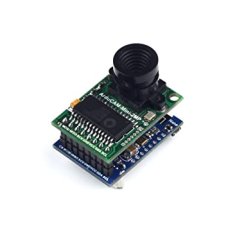

- #Arduino camera wifi shield serial
- #Arduino camera wifi shield full
- #Arduino camera wifi shield code
The posting rules aim to help you better articulate your questions and be descriptive enough to get help.Īny topic that fails to comply with the posting rules will be unapproved starting from. Here are our forum rules to comply with if you want to post a new topic: Arducam posting rules It will trigger the capture command on the ESP8266 Arduino side, and it will send back the captured image and display on the webpage. After few seconds, the webpage will notify the successful connection established.Īfter that you can click the send button to send a websocket message to ESP8266.
#Arduino camera wifi shield serial
Change the websocket IP address get from the serial monitor marked in red box in the picture.Ĭlick the “Connect” button, you will see the websocket connection request from the serial monitor. Provide you now have the IP address 192.168.1.105 for websocket server, and open the camera_demo.html located in your C:\Users\\AppData\Local\Arduino15\packages\ArduCAM_ESP8266_UNO\hardware\ArduCAM_ESP8266_UNO\2.2.4\libraries\ArduCAM\examples\ESP8266\ArduCAM_ESP8266_UNO_Capture\html_2640 folder from your web browser. The assigned IP address can be determined via serial monitor message. Open the demo sketch ArduCAM_Mini_OV2640_websocket_server.ino, change the following line according to your own wifi AP router, then upload. The connection between the ESP8266 board and ArduCAM mini is shown as the following picture and table. To complete this demo you need two items: It connects to a user defined WIFI router by DHCP, then you can connect to this server via your web browser. In this demo, we create a websocket server on the ESP8266 arduino borad. Detail websocket description can be found from wiki.

It allows bi-directional conversation between a browser and the server. Unlike the standard HTTP protocol, the websocket protocol only use HTTP protocol for the handshake stage and keep the connection open afterward. The standard HTTP protocol which is C/S based architecture, a client send a request to a server, the server send the information requested back to the client and close connection immediately. It is designed to be implemented in web browsers and web servers, so it can be used by any client and any platform like PCs, laptops, pads and smart phones. WebSocket is a protocol providing full-duplex communication channels over a single TCP connection. In order to transfer a photo to webpage, I have to briefly introduce the technology of websocket first. Now ArduCAM ports our camera libraries for ESP8266, you can use the ESP8266 module with ArduCAM modules to take high quality high resolution photos and save to SD card, or even to publish the photos to webpage. In this tutorial we will use ESP8266 arduino board to take photos and publish to webpage. A more detailed setup can be found from the adafruit guide. With faster CPU speed and much smaller form of factor, most important the less than $10USD price is more attractive, you are worth to try although there are also some limitations. Setup is fairly simple with downloads for Linux, OS X, and Windows.
#Arduino camera wifi shield code
But little you can do in your code will increase power consumption.It is good news to hear that the Arduino IDE support was announced on the ESP8266 community forum, the source code can be found from . It is more than another Arduino board, but can be thought as an Arduino combined with a WIFI shield. If you are an advanced programmer, you can reduce power consumption by using sleep modes.
#Arduino camera wifi shield full
By default, the cores are awake and running at full speed. When running heavy processing tasks, more cores can be woken up and clock speeds can be increased in order to deal with the increased demand, consuming more power and heating up, until the tasks are done.īut in MCU, normally there is only one core, 2 in a few models, and the clock speed is fixed. This reduces power consumption when they are not needed, increasing battery life or reducing cooling needs. It probably makes little difference what code is running, the power dissipation will be almost the same.ĭesktop/laptop/server CPUs have many advanced features such as the ability to increase or decrease the clock speed or put parts of the CPU, like different cores, or specialist parts of cores like maths processors, into sleep. MCU processors are much simpler than desktop/laptop/server CPUs.


I'm suspecting heavy arithmetic operations like loops doing math would do it.


 0 kommentar(er)
0 kommentar(er)
